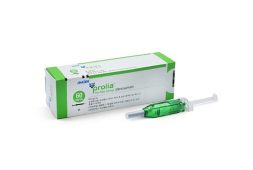The Broken Synapses From Alzheimer’s Patients May Possibly be Repaired, Thanks To Buck Institute Scientists

A recent study introduces a novel approach to combat the memory impairments associated with Alzheimer’s disease and related dementias. It diverges from the conventional strategy employed by pharmaceutical giants, which typically focuses on directly targeting the toxic tau proteins intricately linked with these conditions.
Instead of solely focusing on eliminating the harmful compounds, researchers at the Buck Institute for Research on Aging embarked on a different path. They sought to counteract the detrimental effects induced by these compounds by leveraging a naturally occurring protein present in both the kidneys and the brain.
“While newly approved drugs for Alzheimer’s show some promise for slowing the memory-robbing disease, the current treatments fall far short of being effective at regaining memory. What is needed are more treatment options targeted to restore memory,” said Buck Assistant Professor Tara Tracy, PhD, the senior author of the study made.
The focal protein under scrutiny bears the moniker KIBRA, derived from its dual presence in the kidney and the brain. Tracy and her research cohort discerned its distribution not only within renal tissues but also notably across synaptic junctions in the brain. These junctions, vital for the formation and retrieval of memories, host KIBRA’s activity.
Further investigation revealed a deficiency of KIBRA in the brains of individuals afflicted with Alzheimer’s and dementia, hinting at its potential role in the pathology of these cognitive disorders.
“We wondered how the lower levels of KIBRA affected signaling at the synapse, and whether understanding that mechanism better could yield some insight into how to repair the synapses damaged during the course of Alzheimer’s disease,” said Buck Staff Scientist Grant Kauwe, Ph.D. He is also the co-first author of the study.
“What we identified is a mechanism that could be targeted to repair synaptic function, and we are now trying to develop a therapy based on this work.”
To investigate the impact of KIBRA on synapses, the researchers developed a truncated functional variant of the KIBRA protein. They conducted experiments on laboratory mice exhibiting a condition analogous to human Alzheimer’s disease, discovering that this modified protein possessed the ability to counteract the memory deficits characteristic of this form of dementia. Their findings elucidated that KIBRA operates by restoring the mechanisms crucial for bolstering synaptic resilience.
Subsequently, the researchers sought to assess KIBRA levels in the cerebrospinal fluid of human subjects, aiming to discern its fluctuations alongside other pivotal markers in Alzheimer’s pathology, such as toxic tau protein and beta-amyloid. Their analysis revealed a correlation between elevated KIBRA levels in the cerebrospinal fluid and reduced levels in the brain with the severity of dementia, indicating a potential biomarker for disease progression.
“We also found this amazing correlation between increased tau levels and increased KIBRA levels in the cerebrospinal fluid,” said Tracy. “It was very surprising how strong the relationship was, which really points to the role of KIBRA being affected by tau in the brain.”
The team is delving deeper into this phenomenon, with the aim of potentially utilizing KIBRA as a biomarker for synaptic dysfunction and cognitive decline. This could prove invaluable for diagnosis, treatment strategizing, and monitoring disease progression and response to therapy.
“Interestingly, KIBRA restored synaptic function and memory in mice, despite not fixing the problem of toxic tau protein accumulation,” said Kristeen Pareja-Navarro, co-first author of the study. “Our work supports the possibility that KIBRA could be used as a therapy to improve memory after the onset of memory loss, even though the toxic protein that caused the damage remains.”
To constantly address the fundamental culprit behind a disease, such as the tau protein in Alzheimer’s, holds promise as an ideal treatment strategy. However, despite the theoretical appeal, the vast majority of pharmacological interventions targeting this mechanism have faltered, showing limited efficacy in alleviating the symptoms of Alzheimer’s disease.
The persistent lack of success in this area underscores the pressing need to explore alternative approaches.



